JOURNEY WITH JESSICA
Words Matter- Part Two
Last month I introduced the concept of ableism in our worship services by exploring the language of hymns. This month I want to explore further because, other than structural barriers, our words and metaphors have created barriers between the church and the disability community— one that does not cost money, but is in desperate need of repair.
Jesus came and upended society, to liberate those people society cast to the margins. “The first will be last and the last will be first.” (Matthew 19:30). Jesus came to heal – to “make whole,” – and bring people into community. Healing in Jesus time was very different than our modern concept of a medical “cure.” For first-century peoples, the act of “being” was valued over the act of “doing,” interdependence prized over independence, and physical suffering was an expected part of life.
When Jesus brings marginalized people, including those with disabilities, into the center of community, he validates their personhood and belonging. The disability is no longer a barrier to full and equal participation. He does this with more than just disabilities. Jesus also brought the poor, children, women, tax-collectors, and others from the margins of society into the center of God’s mission on earth. The point was that the person wasn’t wrong, it was the society marginalization that was wrong— what we could call “social sin.”
According to Kathy Black in her book A Healing Homiletic: Preaching and Disability: “Both literal and metaphorical interpretations result in identifying the person with the disability in the text with sin in some way. On the one hand, the person either is being punished for sin or is lacking in faith; on the other hand, the physical reality of a few is equated with the disobedience and sin of many. Neither method treats the persons with disabilities in the texts as subjects in their own right. They are often used as objects or object lessons.”
Taking these healing stories full of courageous people who, despite the world turning their back on them, they continue to persevere and seek wholeness among the community— and Christ who acknowledges them and does what is necessary to restore them to community—and then distort that into a metaphor of sin in our times is missing the point. Jesus did not believe disabilities were sinful or because of sin. When specifically asked about the man blind from childhood, he was clear about that. Yes, Jesus tended to pair a healing interaction with “your sins are forgiven” but that was a bit different than we consider it in our society. It would be akin to saying “You are fully welcome and belong here.”
So how do we avoid the trap of “using the physical reality of few and equating it with the disobedience and sin of many.” Awareness is the start. “Willful blindness,” “Deaf to your call,” and “Crippled with fear” all make the state of some people’s bodies wrong or sinful. Because these metaphors are so common in our world, especially within the church, awareness is a must if we want to be a welcoming and loving place for people with disabilities.
After awareness comes action. For preaching, I highly recommend Kathy Black’s book quoted above. She points out the sticky points homilists come up against in the healing stories along with other, more inclusive ways to engage with the text.
We also need to name the shortcomings. I just came back from a leadership intensive that used a model with a quadrant “blind spot.” It’s a common metaphor. Just as it’s time to retire the phrase “black mark on history,” so too, the time has come to retire the “blind spot” phrase. It’s lived its day. The facilitator pointed that phrase out and asked everyone too cross out the word “blind” and write in “unaware.” I’m sure Jesus smiled. Slowly we are learning how to restore all to their rightful place in God’s community.
Bridge Blogger Jessica Thompson
Categorised in: Journey with Jessica
